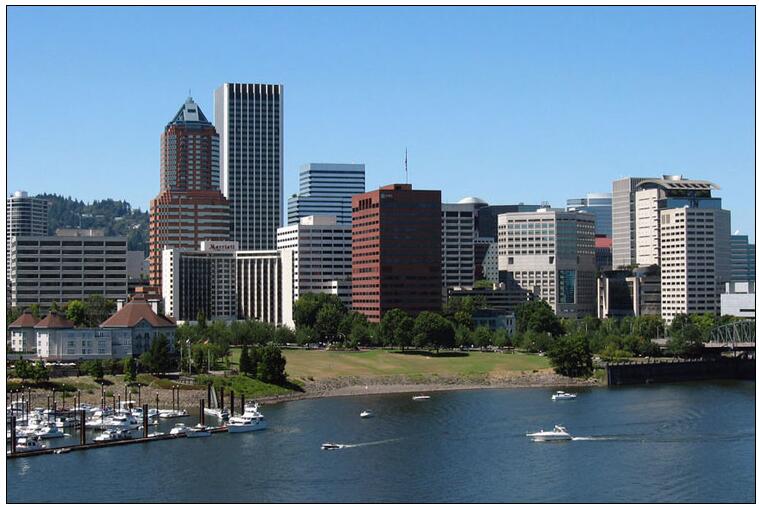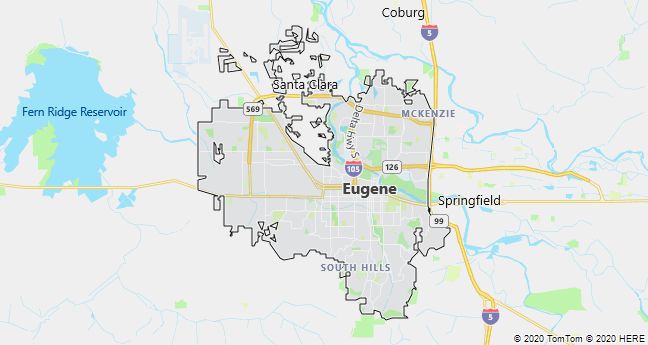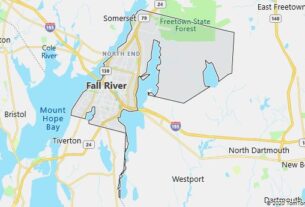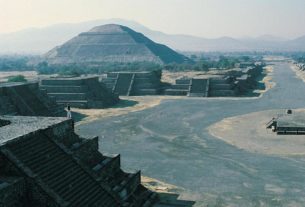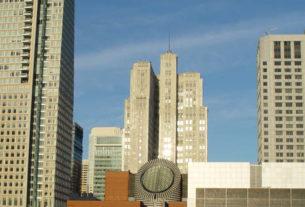Portland
Portland (Oregon), largest city in Oregon, USA on the Willamette River located near the mouth of the Columbia River; 583,800 residents (2010). Portland, which has been an important port city since its founding in 1843, is an economic and cultural center. Together with a fast-growing computer industry (hence the popular name Silicon Forest), the wood and paper industry, metal industry and chemical industry are among the largest industries.
Following a much-needed renovation, downtown has become a tourist destination since the 1970’s. Attractions include the Portland Center for the Performing Arts and the architect Michael Graves’ controversial Public Service Building (1980-82). In the suburb of Beaverton is the headquarters of the Nike Group. 
Eugene
Eugene, town on the Willamette River in Oregon, USA; 156,200 residents (2010). After the railroad in 1870 and the founding of the University of Oregon in 1872, the city became a regional center of forestry and agriculture. The many students (20,000 at the university) make their mark on the city, which has a young and fast-growing population. The city claims to be the hotbed of the jogging movement and markets itself as the sports capital of the United States.
Salem
Salem (Oregon), the capital of Oregon, USA; 154,600 residents (2003). The city, which is part of the Portland metropolitan area, contains, in addition to the state administration, a number of higher education institutions, such as Willamette University (1842) and a department of Tokyo International University (1989).
Oregon National Historic Trail
In 1810, scout Robert Stuart managed to overcome the wall of the Rocky Mountains. He discovered the easily passable South Pass in Wyoming. For many years, only the most intrepid mountaineers, hunters or fur traders made their way here. However, the desire of the church to save the souls of the Oregon Indians untouched by Christianity was so strong that in 1836 the Presbyterian missionaries Marcus Whitman and Henry Spalding and their wives set out on a 3,500 km long march.
The messages they sent were generally very positive, so many people and families with children followed them to the dream areas of Oregon and California. The places attracted them mainly with large supplies of wood, fertile soil and a pleasant climate. In addition, it turned out that the malaria that plagued the local farmers did not occur in the west. However, the journey to the promised land was quite difficult, it led from Independence, Missouri across the Great Plains, through the Rocky Mountains, and it took from four to eight months to conquer. On the way, the pilgrims faced many obstacles in the form of difficult terrain, hunger, exhaustion, frost and snow disasters in the mountains, or, on the contrary, unbearable heat and numerous raids by Indians.
In the years 1841-1848, only 2,700 people went west, while a year later there were already 30,000. Before the railroad was established in the area, around half a million immigrants passed through this Oregon Trail. However, it is reported that nearly one in fifteen died en route. Over time, the Oregon Trail became one of the most important and famous transcontinental routes. Of all the trails associated with the conquest of the Wild West, it was also the most famous. It ended at the Columbia River.
